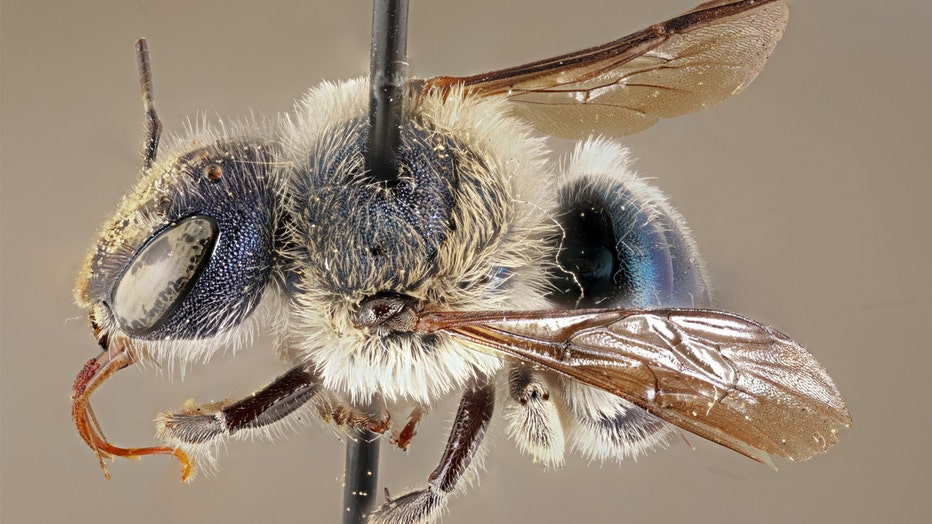'Ultra rare' metallic blue bee spotted in Florida
LAKE WALES, Fla. - Researchers in Florida have rediscovered an “ultra-rare” metallic blue bee that hadn’t been spotted in years – so long that experts weren’t sure it still existed.
The Naples Daily News reports Florida Museum of Natural History researcher Chase Kimmel found a blue calamintha bee on March 9.
Since then, more of the elusive bees have been spotted, but efforts to research the insect have been curtailed by the coronavirus pandemic.
The museum wrote in a release that it was the first time one had been spotted since 2016. The blue calamintha bee – or Osmia calaminthae – has unusual facial hairs that are used to collect pollen.

This blue calamintha bee specimen was collected in 2002 in Placid Lakes and is one of five specimens at the Florida State Collection of Arthropods in Gainesville. (FLORIDA MUSEUM PHOTO BY CHASE KIMMEL)
It’s a unique insect for a number of reasons, Kimmel said: It collects pollen on its face, relies on "Ashe's calamint," a threatened flowering plant and is found primarily on Lake Wales Ridge, a habitat in central Florida.
“We observed a shiny little blue bee grabbing (an Ashe’s calamint flower) and rubbing its head on the top portion of the flower 2-3 times,” Kimmel’s statement says.
That behavior is unusual and a unique characteristic of the blue calamintha bee: “We were pretty shocked to see it.”
According to a 2015 U.S. Fish and Wildlife Service report, the bee is thought to live only in the Lake Wales Ridge region, "a globally recognized biodiversity hotspot and one of the nation’s fastest-disappearing ecosystems."
“This is a highly specialized and localized bee,” said Kimmel's advisor, Jaret Daniels, director of the museum's McGuire Center for Lepidoptera and Biodiversity.
The Florida Museum says the bee was first described in 2011, but scientists weren't sure the bee stll existed. Prior to this year's discovery, it has only been recorded in four locations at Lake Wales Ridge.
“I was open to the possibility that we may not find the bee at all so that first moment when we spotted it in the field was really exciting," Kimmel said.
The Associated Press contributed to this report.

